Day 6: The Battle of Nauvoo
Today we read about the battle of Nauvoo. Because of sickness, age, pregnancy, and being too poor to purchase supplies, some of the Saints remained in Nauvoo after the majority had left on the journey west.
The hostility of the anti-Mormons continued to rise, resulting in a mini war. After the Saints surrendered, a peace treaty was worked out but not honored by the anti-Mormons. The Saints were driven out of Nauvoo by the angry mobs.
“In spite of their poor condition, the Saints in Nauvoo formed their battle lines and waited for their enemies to attack. The women baked bread to feed the soldiers.” (Wagons West, pg. 54)
For our activity, we made some homemade bread. We also made some butter by shaking cream in jars. This was a practice in patience and hard work.
Only Porter passed the test and shook his all the way into butter without giving up. The kids really enjoyed both of these activities. 🙂
Then we sat down on the floor, on our quilt and ate the bread and butter.
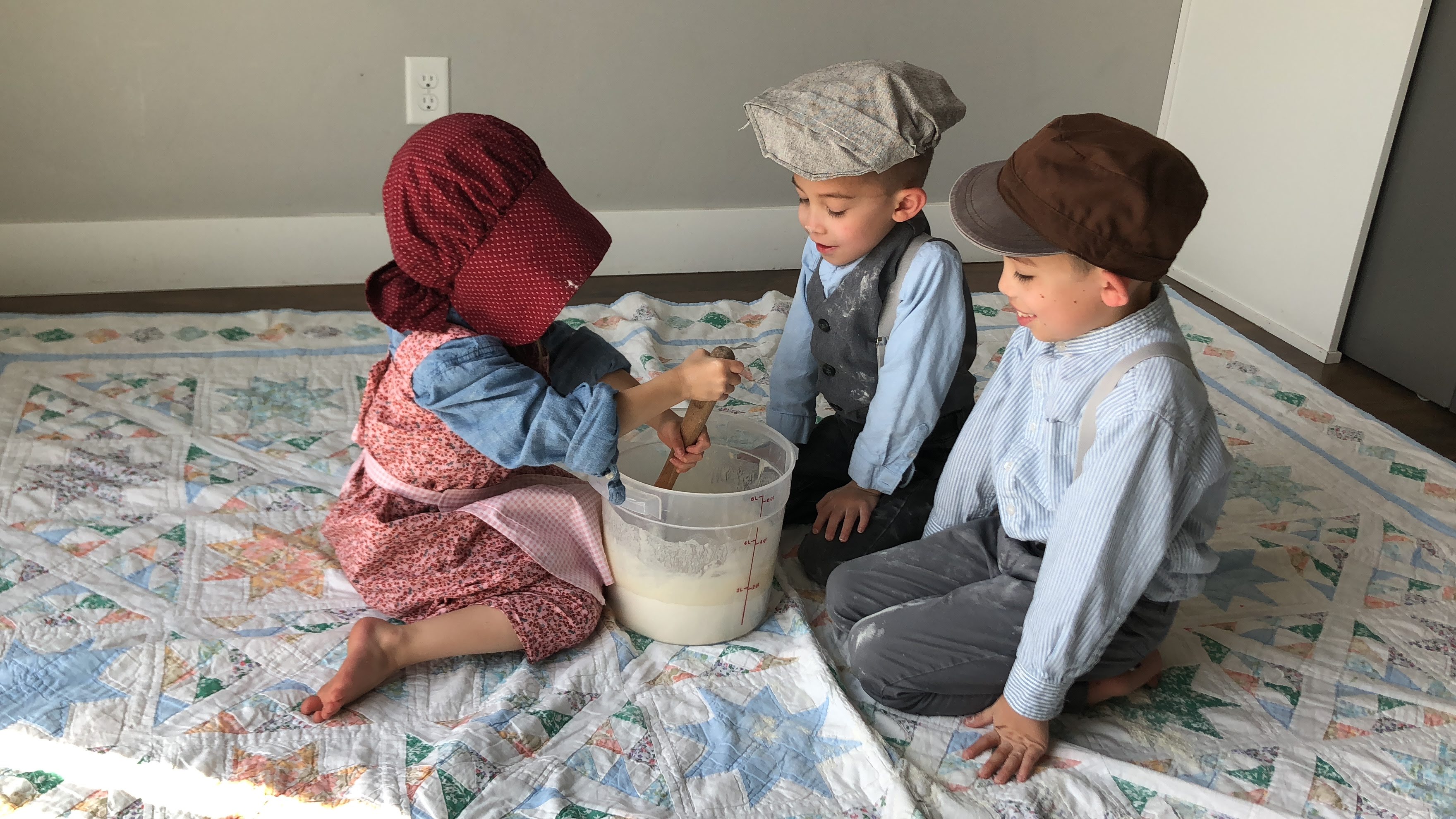


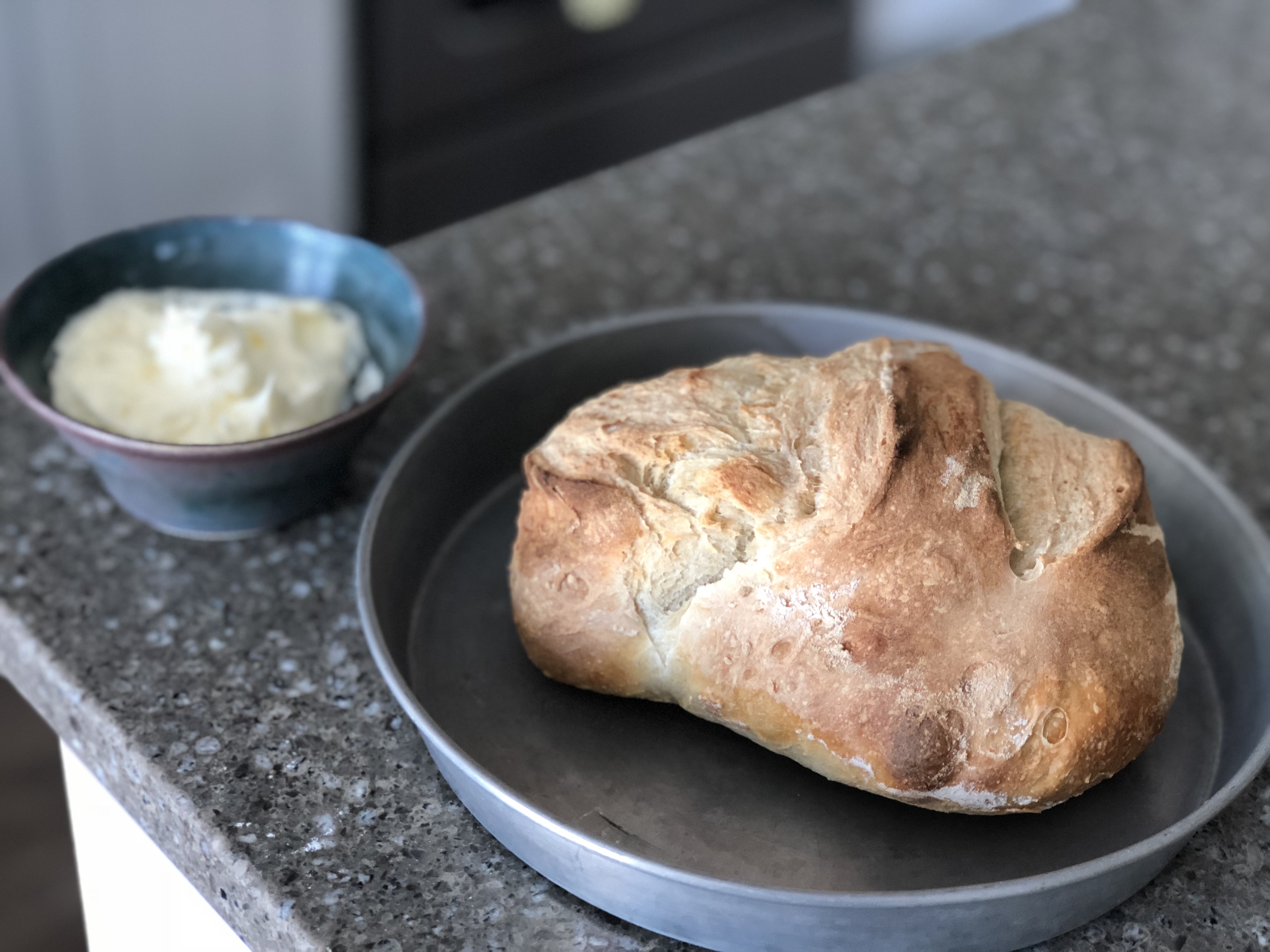
Day 7: The Miracle of the Quails
The last Saints that were forced out of Nauvoo camped on the west side of the Mississippi River with minimal supplies and food. More than 300 people, barely surviving. “Their main food was corn, which they ate boiled or parched. For water, they drank from the river. Many of those remaining suffered from disease and exposure to the elements.”
“Then on October 9, a miracle occurred. Thomas Bullock wrote that those in the ragged camp were amazed to see flocks of quail swoop overhead and then settle to the ground. “This morning we had a direct manifestation of the mercy and goodness of God, in a miracle being performed in the Camp,” he wrote.
“A large, or rather several large flocks of quails, flew into camp. Some fell on the wagons, some under, some on the breakfast tables. The boys and the brethren ran about after them and caught them alive with their hands. Men who were not in the church marveled at the sight.” “The boys caught about twenty alive,” he reported.
“Every man, woman and child had quails to eat for their dinner and after dinner the flocks increased in size.” And that was not all. “The quails flew around the camp, many delighted in it. Then all the flock would rise, fall around our camp again a few rods off and then would alight again and close to the camp.
This was repeated more than a half dozen times.” In this way, the Saints were able to have fresh meat at the start of their journey. “The brethren and sisters praised God and glorified his name,” Thomas recorded.” (Wagons West, pg 60-61).
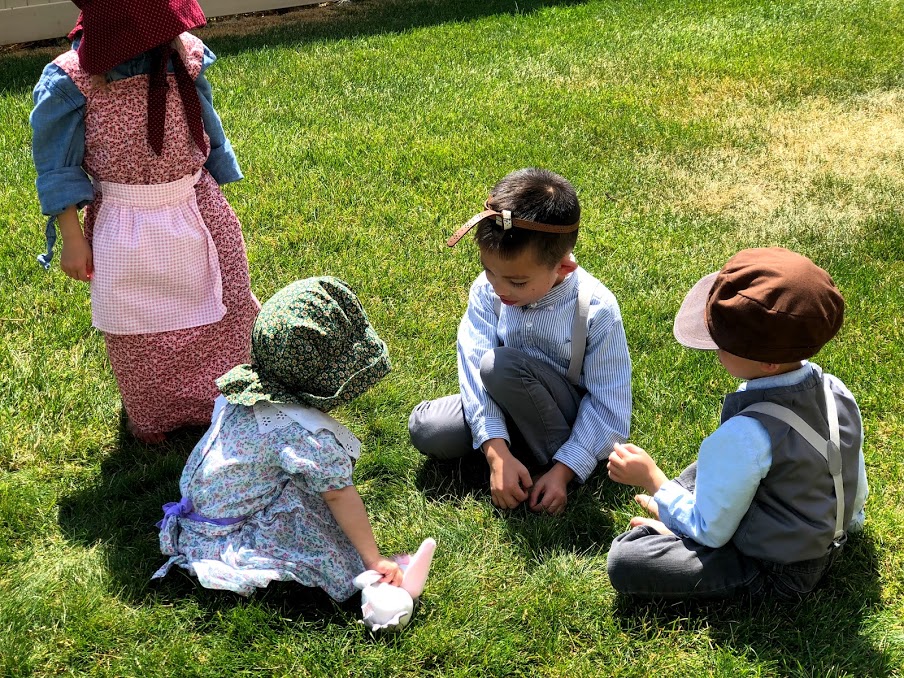
Landon pretended to be a quail (with a belt on his head) while the kids ran around and chased him until he was caught. 🙂 Then it was Evelyn’s turn to be the quail but she just took off running. That one got away. 🙂
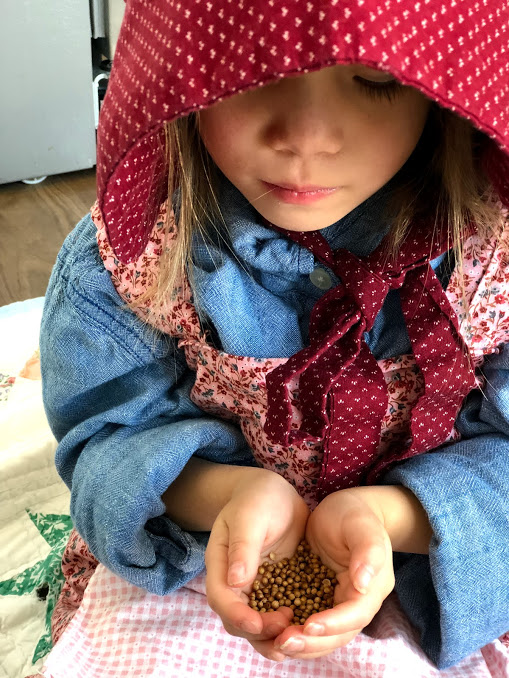
I told the kids the story from the Bible of Moses and the children of Israel gathering manna and quails everyday for 40 years while they wandered in the wilderness. And we compared that to Heavenly Father sending the quail to the Saints.
“And it came to pass, that at even the quails came up, and covered the camp: and in the morning the dew lay round about the host. And when the dew that lay was gone up, behold, upon the face of the wilderness there lay a small round thing, as small as the hoar frost on the ground. And when the children of Israel saw it, they said one to another, It is manna: for they wist not what it was. And Moses said unto them, This is the bread which the Lord hath given you to eat.” (Exodus 16:13-15)
Exodus also says (in verse 31) “And the house of Israel called the name thereof Manna: and it was like coriander seed, white; and the taste of it was like waters made with honey.”
I showed the kids some coriander seeds and we talked about what it might have been like for the children of Israel to gather manna everyday and how it was a gift from Heavenly Father.

I also shared a manna story from our own family history. This story is about my great-great-great grandparents, James Richard Aucock Hawkins and Ann Sewell Hawkins (and their daughter, Susannah).
(From Susannah’s history)…”They spent the first winter in a one-room adobe hut in Salt Lake City. The roof and floor were made of packed dirt, and quilts served as the door and windows. James found work that winter with Jesse C. Little, who was very kind and paid generous wages.
In the spring of 1855, the family moved to Tooele. However, 1855 came to be known as the year of “the grasshopper war.” The grasshoppers devoured all the crops growing in the community, and the saints faced the very real prospect of starvation. However, the Lord provided for his people.
The people found that at night, a honeydew substance grew on the willows. When the branches were boiled, it produced a syrup that could be eaten along with sego lilies. The saints referred to the honeydew substance as “Manna,” and like the ancient Israelites, they found that they could always find enough in the morning to last them through the day. Susannah remembered:
“Our father would go out in the morning taking the children with him, he would dig the segos, and we children would gather them up until all our skillets were filled. We used to gather segos as large as small onions, also manna, which we gathered off the willows which we boiled down for syrup. We also had the pigweed and thistles boiled for greens. We had one corn cake a day. The meal was weighed and the cake baked and divided among the family.””
So for our lunch, we combined all of these stories. We had “quail” (chicken, because I couldn’t find anywhere around here that sells quail), honeydew, and and honey wafers (mini stroopwafels filled with honey)
Day 8: Winter Quarters
The plans of making it all the way to the Rocky Mountains in 1846 just weren’t going to work out because of all of the unforeseen obstacles that had occurred so far on the journey. It was now too late in the year to go on. Winter was close at hand. The Saints made a temporary settlement on both sides of the Missouri River (on the border of Iowa and Nebraska). They named this settlement Winter Quarters and it became an instant city on the plains. The Saints constructed about 700 homes ranging from solid two-story structures to simple dugouts in the bluffs.
Life was not easy. Because of the difficulties of traveling many people were sick and many died. Understandably, there was much complaining, contention, and faltering faith.
Brigham Young admonished them not to murmur and to continue to have faith. He “realized that to keep their spirts up, the Saints sorely needed some of the things that had made life good in Nauvoo. That meant not only work to do but also recreation and spiritual uplifting.”
Through a revelation that Brigham received (which became section 136 of the Doctrine and Covenants), “The people were admonished to stop arguing with each other. They should avoid the sins of contention and drunkenness and should return things they borrowed or found. And then the revelation said, “If thou art merry, praise the Lord with singing, with music, with dancing, and with a prayer of praise and thanksgiving.” (Wagons West, pg. 71)
We built a log cabin, did some laundry, listened to music, sang, and danced.
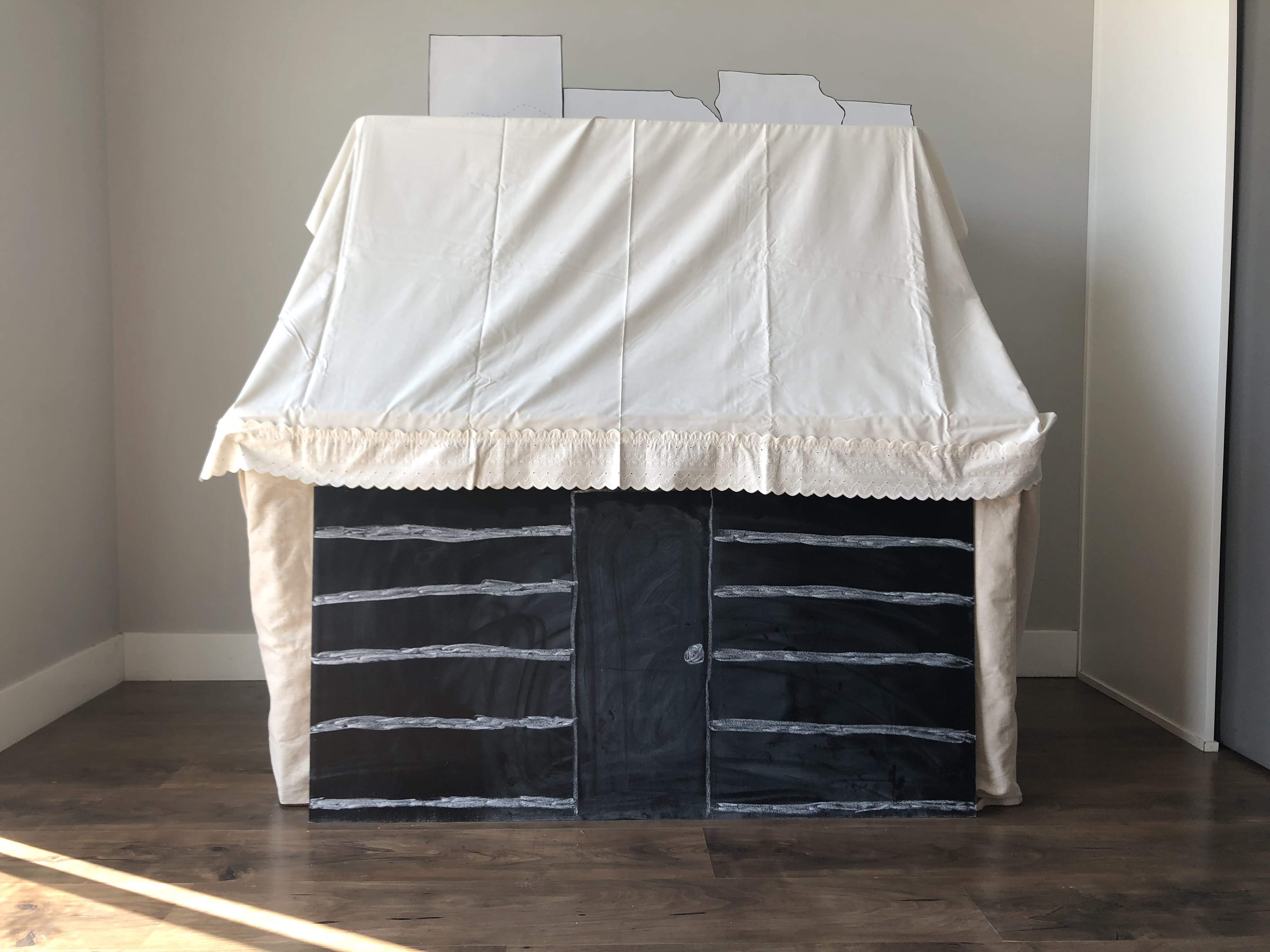
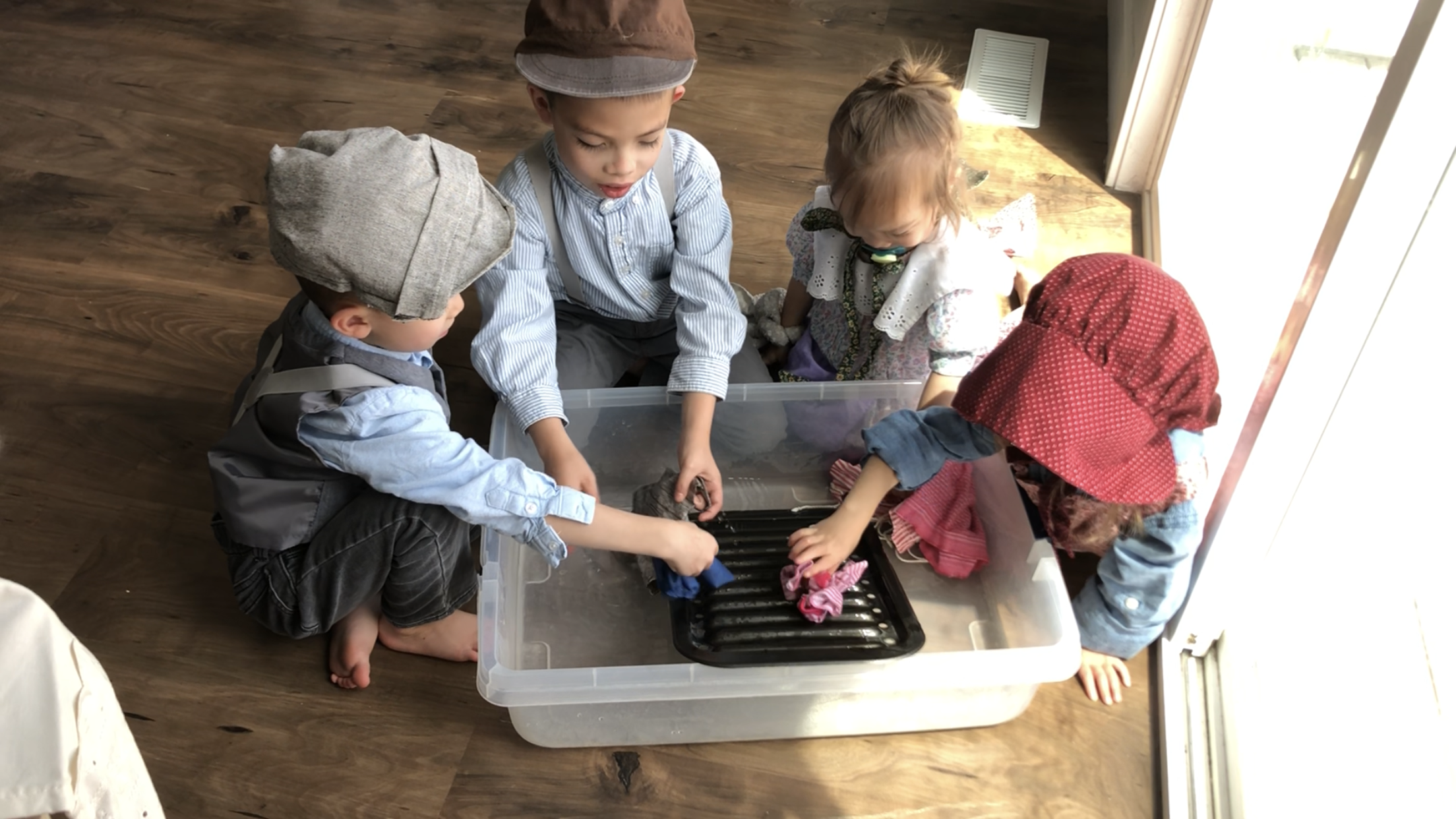

* log cabin made by putting a folding table on top of our kitchen table and using sheets and our chalkboard, “washboard” is just our broiler pan. 🙂
Day 9: The Vanguard
In April [1847], it was time for the first pioneer company to journey on to its final destination. The Brigham Young Vanguard Company was made up of 144 men, 3 women, and 2 children.
The men were picked because of their abilities and included farmers and blacksmiths and carpenters, among other skills. Two of the men in this company were our ancestors that Landon and Porter are representing during our unit – Charles Alfred Harper Sr. and Stephen Markham.
Charles was a carriage maker and wheelwright and helped to keep the wagons working properly.
Stephen was a well respected peace keeper (he was one of Joseph Smith’s main body guards, a leader of the Nauvoo Legion, and a Colonel).
“There were 70 wagons and carriages in the train, with 93 horses, 52 miles, and 66 oxen. The pioneer company also took with them 19 cows, 17 dogs, and some chickens. In addition they pulled a leather boat for crossing rivers, as well as a cannon.” (Wagons West, pg. 79)
Today, we made stick horses (using socks) and headed off on our journey from Winter Quarters.
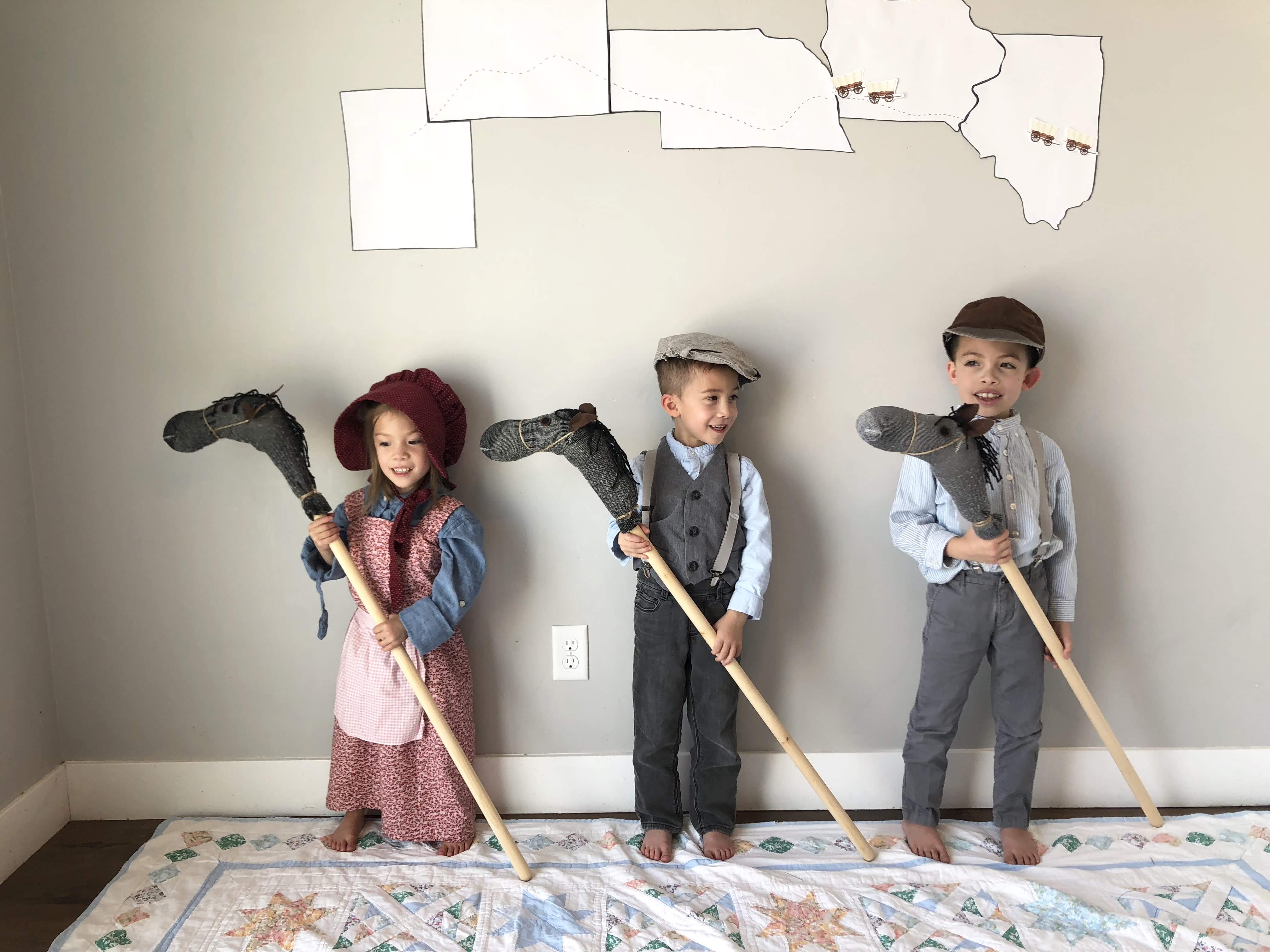
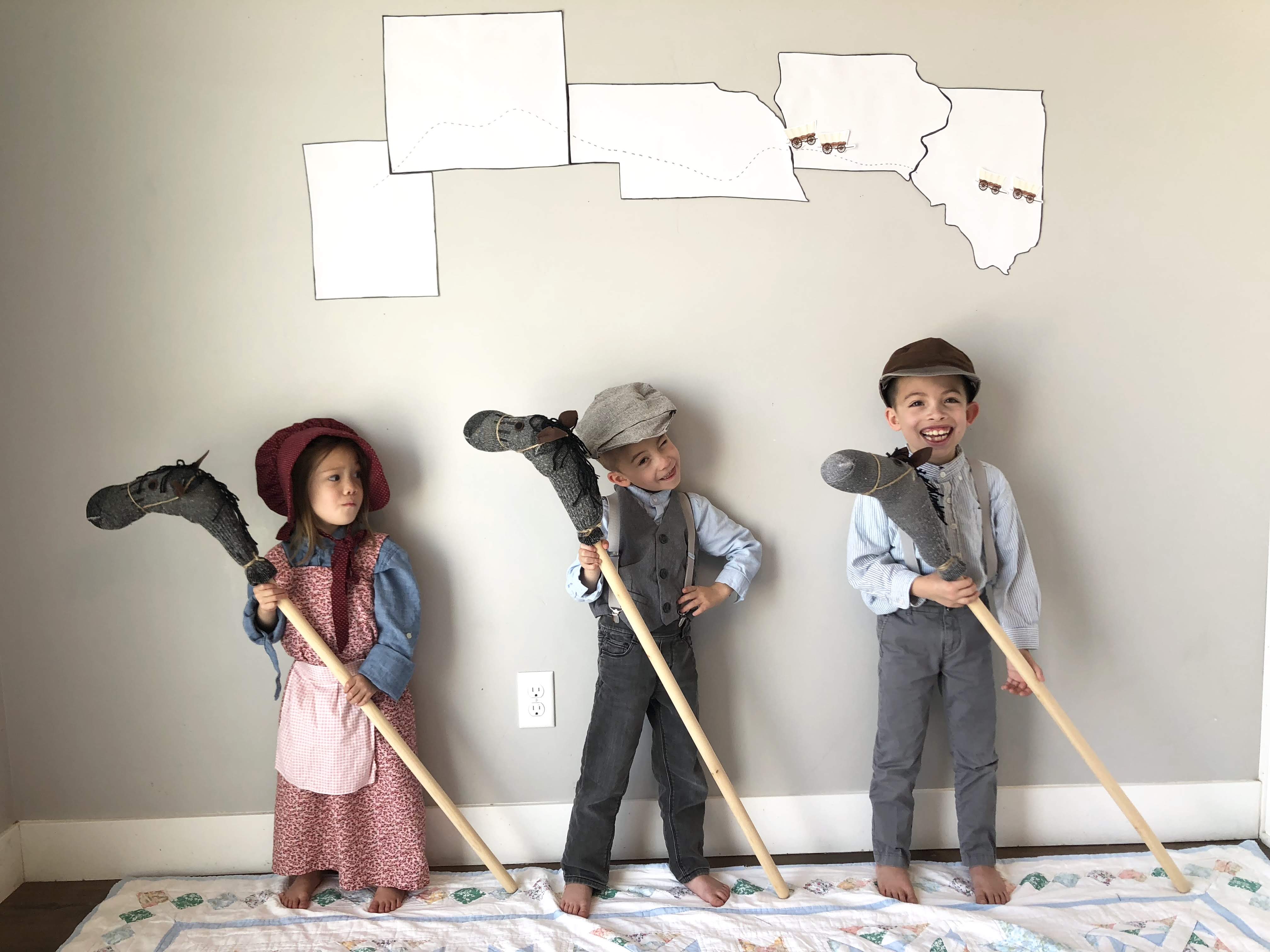

Day 10: Buffalo!
Conditions along the trail began to change. Trees became scarce. That meant there was less fuel for campfires. They either had to eat their meals cold or use whatever fuel was available. William Clayton wrote, “The camp have found a good substitute for wood in the dried buffalo dung which lies on the ground here in great plenty, and makes a good fire when properly managed.” For miles across the open plains, buffalo chips were an important source of fuel for their cooking fires.
In May, the members of the company saw their first buffalo. They hunted and killed some and had their first meal of fresh meat in several months. The men really enjoyed hunting buffalo and at times, Brigham Young had to reprimand them for hunting more than was needed.
Sometimes the pioneers’ fascination with the vast herds led them to neglect their camp duties and ride out to the buffalo. (Wagons West, pg 90-94)
For our activity, I printed out some buffalo heads for masks and the kids ran around the back yard (one buffalo at a time) until the other kids “caught” them. Then we We cooked up some buffalo burgers (I found some ground Bison at Macey’s!) and ate them with some “buffalo chips” (potato chips that I found at Macey’s that are called “Pioneer Chips”). This was our first time trying buffalo meat and we all liked it. The kids kept asking for more.
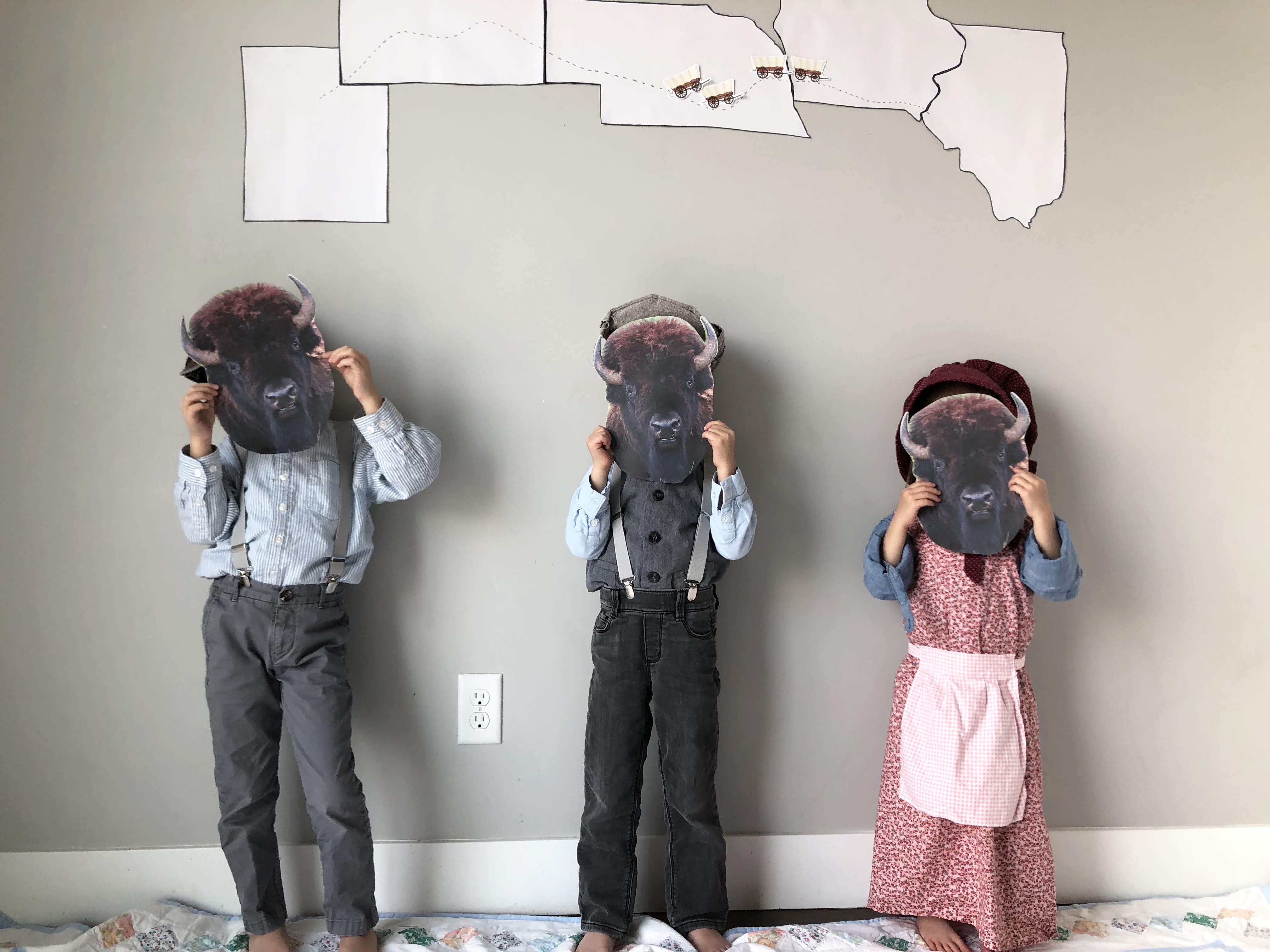
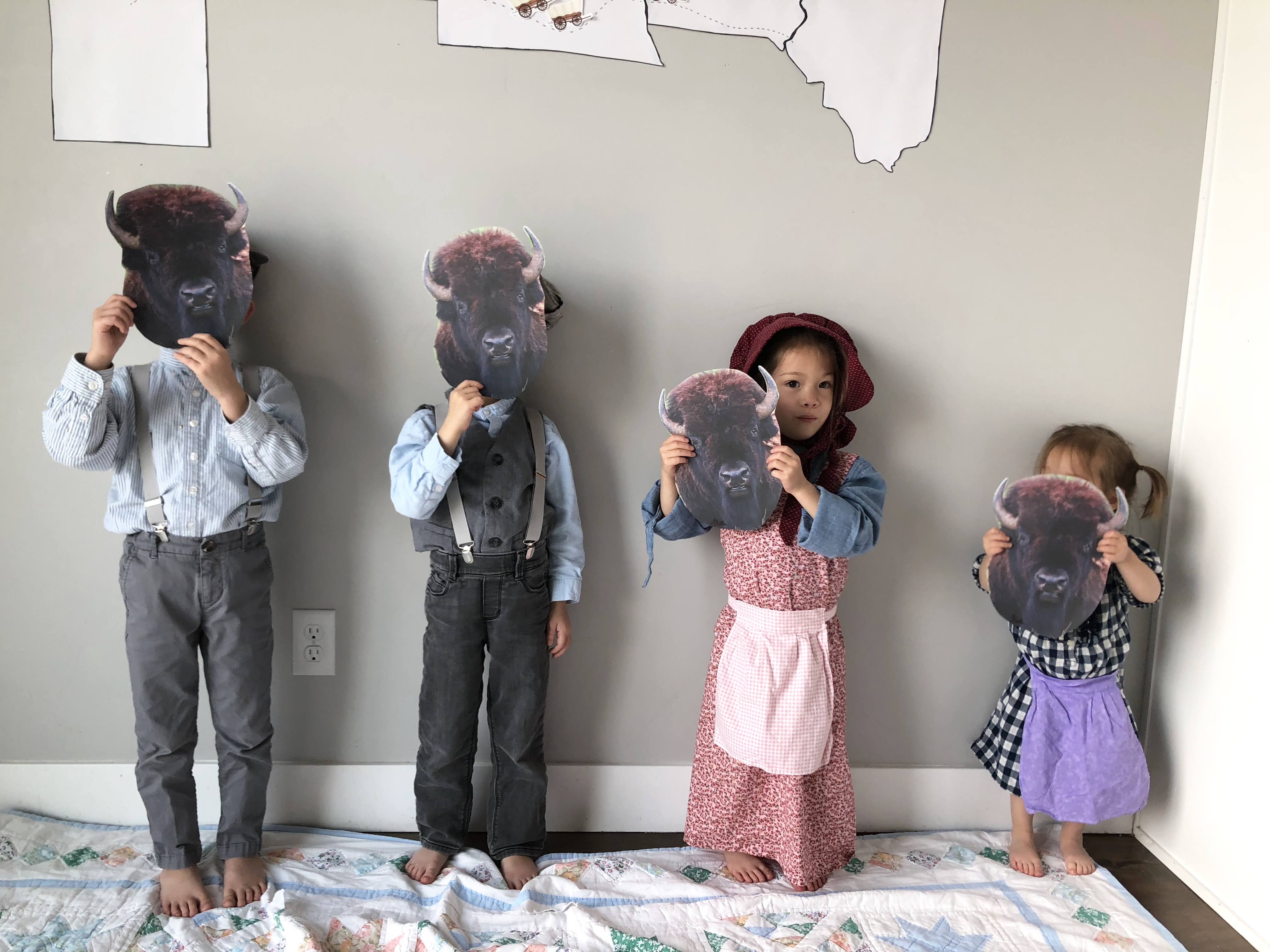
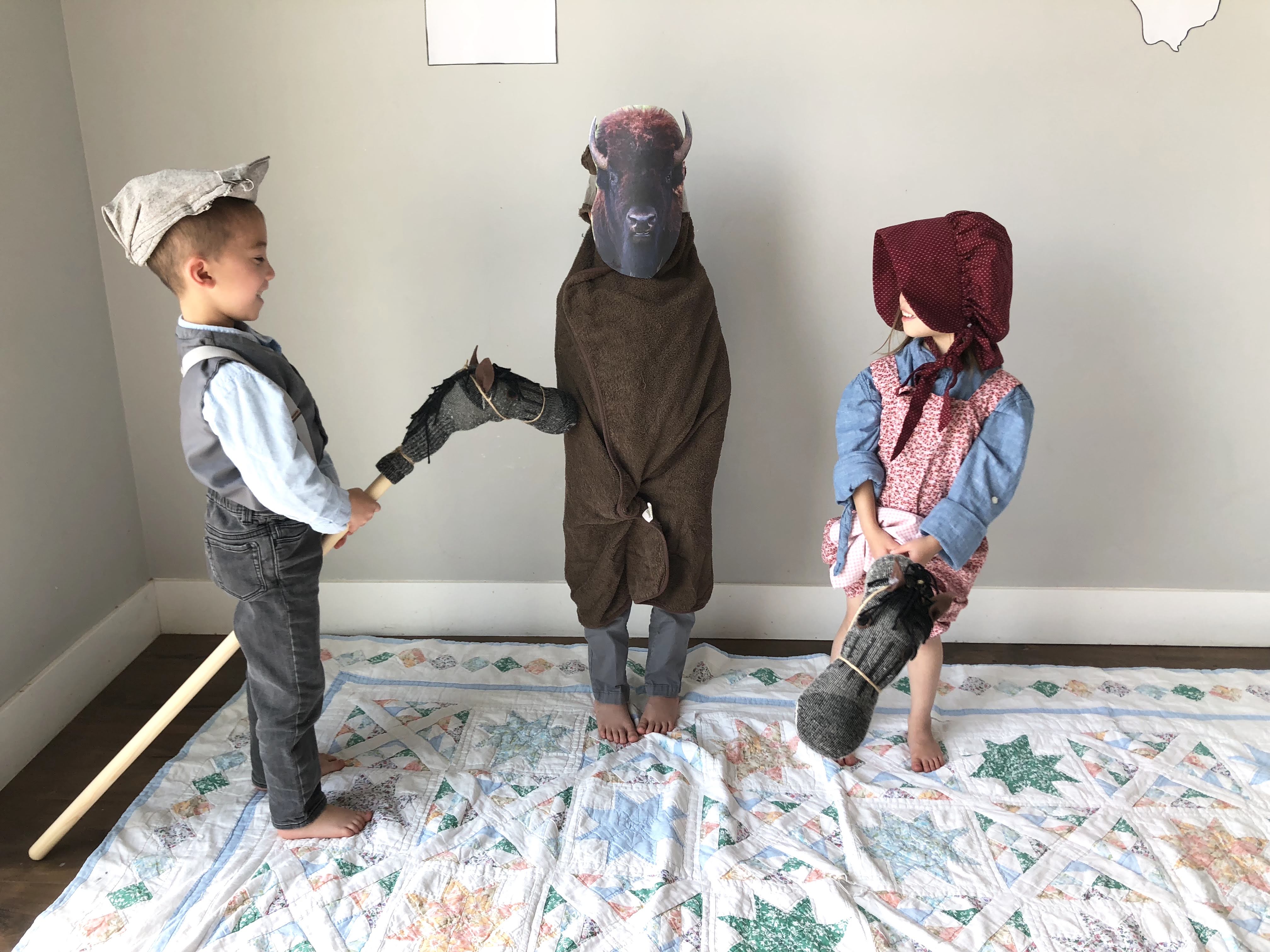
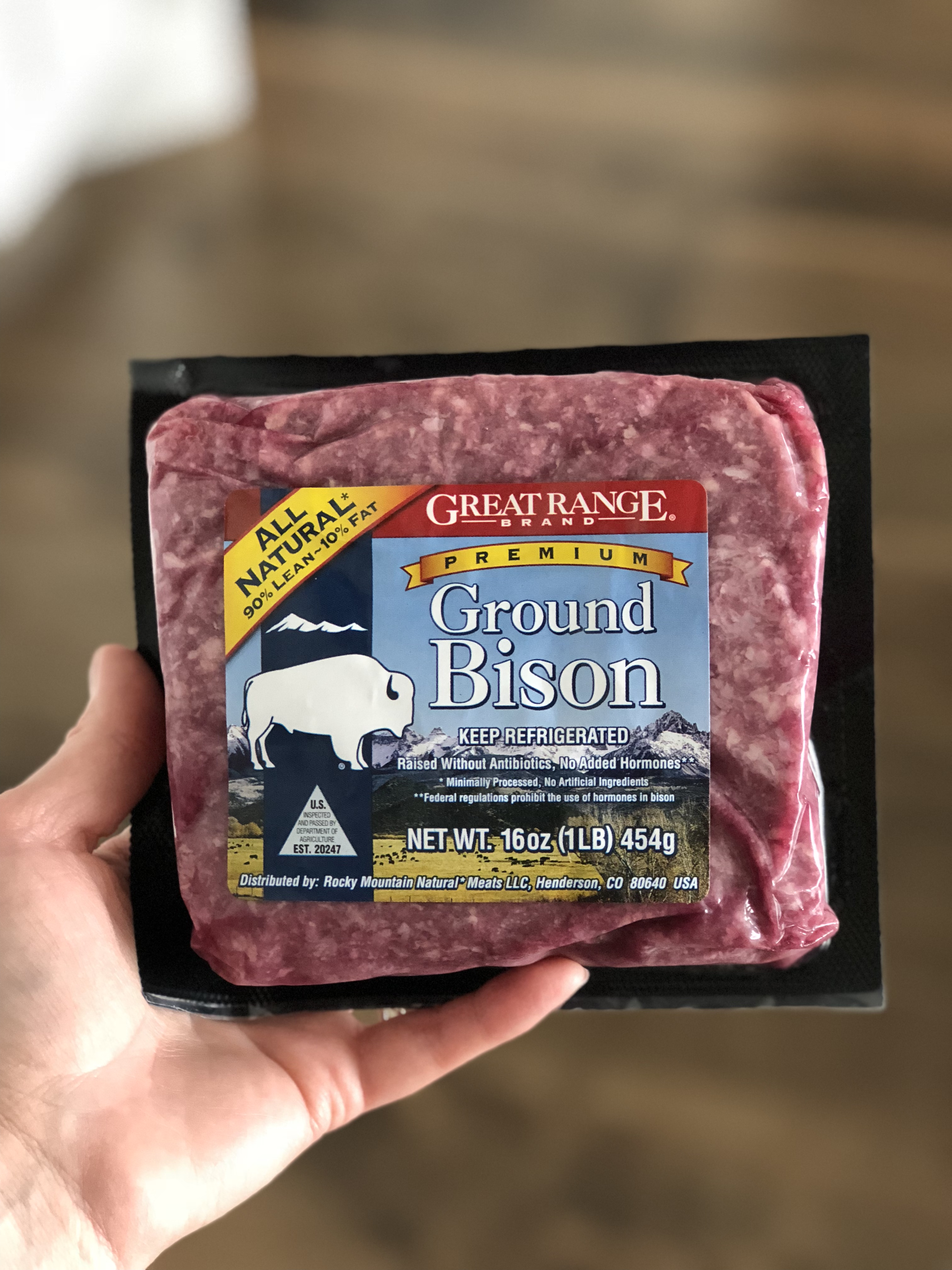

For quick reference, here are the links:

